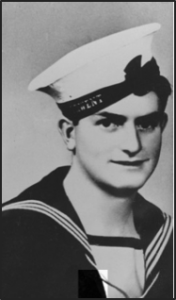Naval Historical Society of Australia
Preserving Australia's Naval History

- This event has passed.
How to further recognise Australian Naval Heroes

Wed 13 Mar, 10:30 am - 12:30 pm
Event Navigation
Overview:

Teddy Sheean VC – which won the Australian Naval Institute’s Commodore Sam Bateman National Brook Prize – chronicled not only the final fight of this naval hero but the battle to get him the Victoria Cross he deserved. The Empire Strikes South was an accounting of all Japanese air raids made in Northern Australia, showing the attacks were far more widespread than first thought, and Atomic Salvation: how the atomic bombs saved the lives of 30 million has attracted international praise. His most recent book is The Sinking of HMAS Sydney, “living, fighting and dying on a WWII cruiser”. His Order of Australia medal was presented for services to naval history.
Presenter: Dr Tom Lewis OAM RAN (Rtd.)
Tom Lewis has combined three interesting career paths to make him one of Australia’s foremost military historians. He has integrated a 20-year RAN track, primarily as an intelligence analyst, with high school teaching, and work as an historian. His 30-year writing career followed time as a journalist, with his first publication Wrecks in Darwin Waters, which was followed by an analysis in Darwin’s Submarine of the first successful submarine RAN action of WWII, resulting in the sinking of the I-124, which still lies outside Darwin today with her 80-man ship’s company. Zero Hour in Broome analysed the second biggest air raid on Australia, and The Submarine Six presented biographies of the six who had RAN submarines named after them; while Lethality in Combat, his most controversial work, analysed the realities of battlefield combat.
Carrier Attack, an extensive technical analysis of the first Darwin raid, revealed many unknown aspects of that assault, and Teddy Sheean VC chronicled not only the fight of this naval hero but the fight to get him the Victoria Cross he deserved. Tom’s most recent publications are The Empire Strikes South, an accounting of all Japanese air raids made in Northern Australia, showing the attacks were far more widespread than first thought, and Atomic Salvation: how the atomic bombs saved the lives of 30 million. His Order of Australia medal was presented for services to naval history.